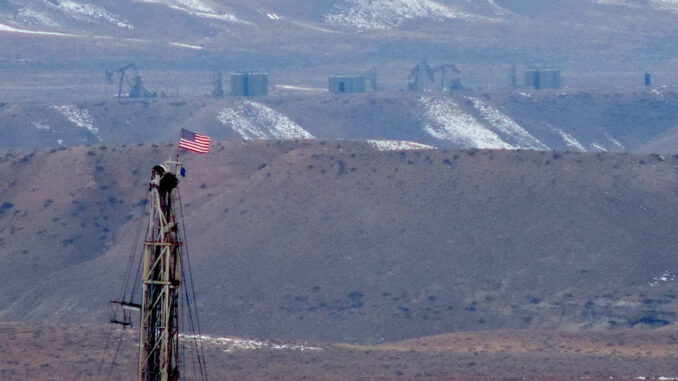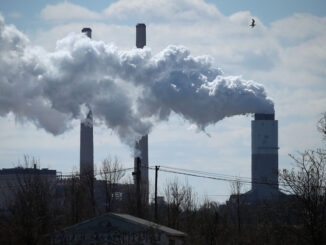
The US Supreme Court June 24 agreed to hear a case questioning how far federal agencies’ must go in considering the upstream and downstream environmental impacts of their actions, in litigation with potential consequences for energy infrastructure development, including oil and gas projects.
The case involves the federal review of an 85-mile rail line planned to connect the Uinta Basin to the national railway network in Kyune, Utah, but it raises questions about the scope of National Environmental Policy Act reviews that echo matters heavily litigated at the US Federal Energy Regulatory Commission.
According to a petition from the Seven County Infrastructure Coalition and Uinta Basin Railway, the question raised in the case is whether NEPA requires an agency to study environmental impacts beyond the close effects of the action over which the agency has regulatory authority (Seven County Infrastructure Coalition v. Eagle County Colorado, 23-975).
In reviewing a proposed rail line, the US Surface Transportation Board in 2021 found that the agency did not need to study the local effects of oil wells and refineries that fall outside the board’s jurisdiction. In doing so, the board relied on a prior Supreme Court decision in Department of Transportation v. Public Citizen.
But the US Court of Appeals for the District of Columbia overturned that STB decision, finding the board “cannot avoid its responsibility under NEPA to identify and describe the environmental effects of increased oil drilling and refining on the ground that it lacks authority to prevent, control, or mitigate those developments.” The analysis should have weighed upstream effects of increased oil development and downstream effects of refining the oil, the DC Circuit said.
The Supreme Court June 24 agreed to hear the appeal of that decision in its upcoming term.
Possible gas case reverberations
The case has potential to rattle a key US Court of Appeals for the District of Columbia precedent involving the Sabal Trail Transmission natural gas pipeline which environmentalists have cited when pushing for more consideration of upstream and downstream greenhouse gas emissions impacts of fossil fuel projects. The Sabal Trail ruling by a three-judge panel found FERC failed to provide enough information about downstream GHG emissions associated with power plants served by the pipeline and two related projects.
In the Seven County case, the petitioners told the Supreme Court that Sabal Trail ruling was an “outlier” among circuit court decisions because, rather than turning on the question of which activities the agency regulates, it hinged on an agency’s power to block a project that would be too harmful to the environment.
ClearView Energy Partners, in a research note, said the Supreme Court case could result in a decision that bars an agency from denying a project application because of “distant environmental effects.” It could also test whether former FERC Commissioner James Danly was correct in his position that the commission lacked an obligation to assess GHG impacts associated with use of gas transported through pipelines, according to ClearView.
The Interstate Natural Gas Association of America and other pipeline and gas groups have argued that, if left in place, the DC Circuit decision in the railway case threatened to “greatly amplify the impediments to project development.” It would complete the expansion of agencies’ NEPA obligation to cover upstream impacts, they said.
In a friend of the court brief, the pipelines and gas companies asked the high court to eliminate the uncertainty behind what they view as a circuit court split on the scope of the NEPA reviews.
“The resulting circuit split is profoundly injurious to the development of critical energy infrastructure in the United States,” they wrote.
Federal government view
The federal government, by contrast, argued that Supreme Court review is unwarranted at this point because there is no circuit court conflict over the proper limits of agency review under the Public Citizen decision. The different rulings are more appropriately attributed to variations in agency statutory and regulatory authority, the government asserted in a May 20 brief.
Moneen Nasmith, senior attorney with Earthjustice, said it is too early to tell what the implications of the case will be, because the DC Circuit ruling under review was “fairly fact specific.” The Sabal Trail case was decided under the Natural Gas Act, which was not at issue in the railroad litigation, she said.
Depending on how the high court rules, the Biden administration’s recently finalized Phase 2 NEPA regulations could be implicated, ClearView offered, because the administration’s new NEPA rule “expressly empowers agencies to consider effects that are beyond the scope of an agency’s statutory authority,” such as greenhouse gas emissions and environmental justice impacts.
Take the Survey at https://survey.energynewsbeat.com/




Be the first to comment